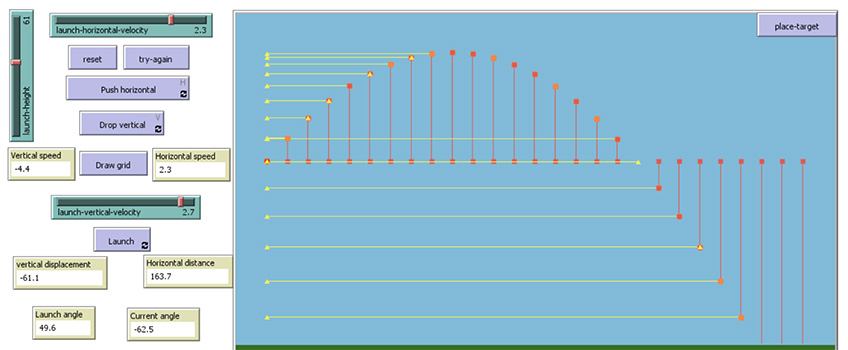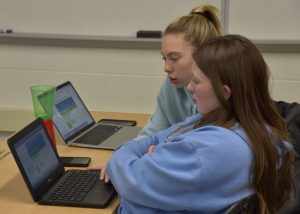Projectile Motion
Problem of practice:
Students often have difficulty building a deep understanding of projectile motion because they do not understand the independence of the horizontal and vertical components of a projectile’s motion.

 Our solution:
Our solution:
The Physics+C Kinematics II unit features a Projectile Motion model in NetLogo. Students select component velocities for a projectile and then launch it; their active involvement in determining the motion, complements the traditional mathematical analysis of that motion. To deepen their understanding, students investigate and decode the model to see how the abstract principles encountered in texts are embodied in the code driving the simulation.
What students will learn:
A conceptual foundation for understanding the independence of a projectile’s horizontal displacement (change in position) and vertical displacement (change in position) over time begins with students using separate buttons to initiate the horizontal and vertical components of a projectile’s motion. Then they launch the projectile and use the draw grid procedure to see how the component motions combine to create the projectile’s path. Understanding how constant velocity in the x-direction and accelerated motion in the y- direction combine to create the parabolic path of a projectile can serve a concrete example for students of an important scientific principle, the idea that small primary elements underlie and explain complex phenomena.
Full Physics+C units list:
Introductory Unit: Epidemic: Introduction to Modeling and Simulation
Plus:
- Kinematics I: Car on a Ramp
- Kinematics II: Motion of a Ball
- Simple Harmonic Motion: Mass on a Spring
- Mechanical Waves: Sound through Different Media
- Electricity: Series Circuits
- Nuclear Physics: Rutherford’s Gold Foil Experiment
If you would like access to these Physics units, please complete the Science+C Interest Form.